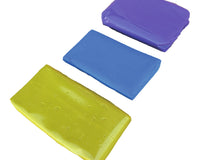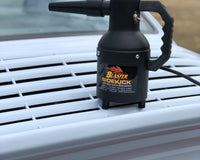Maintaining the appearance and condition of fleet vehicles or company cars goes far beyond aesthetics. A clean and well-detailed fleet creates a strong professional image, increases the longevity of the vehicles, and reduces maintenance costs over time. For businesses, these vehicles are often the first impression clients receive, so a spotless car reflects professionalism, reliability, and care. However, unlike personal cars, fleet vehicles are subject to far more intensive use, frequent driving, and exposure to dirt, grime, and weather elements. This makes their detailing needs very different and requires a systematic approach that prioritises both efficiency and quality. The challenge lies in finding a balance where detailing does not become too time-consuming or expensive, while still ensuring a high-quality finish that protects paintwork, interiors, and mechanical components.
Efficiency is crucial because fleet managers often oversee multiple vehicles, sometimes ranging from a dozen to several hundred. Spending hours on each car is impractical, yet cutting corners can lead to swirl marks, dull paint, or poorly cleaned interiors that reflect badly on the company. That is why businesses need to adopt strategies that streamline detailing without sacrificing the finish. In this blog, we will explore proven methods, professional insights, and smart routines that help achieve that balance. By the end, you will have a clear understanding of how to keep your company cars or fleet looking sharp, while saving valuable time and resources.
The Importance of Fleet Vehicle Detailing for Businesses
Fleet cars are brand ambassadors on wheels. Whether it is a delivery van, an executive car, or a sales representative’s vehicle, its condition says a lot about your organisation. A vehicle that is covered in dirt, with dull paint and stained interiors, can give potential customers the impression that the company does not prioritise attention to detail. On the other hand, a well-maintained car sends the opposite message: reliability, professionalism, and trustworthiness. The detailing process therefore becomes part of your overall business branding and customer perception strategy.
There is also a cost-saving angle to proper fleet detailing. Regular washing, polishing, and protective treatments help preserve the paint, prevent rust, and reduce the risk of permanent staining from contaminants like bird droppings, tree sap, or industrial fallout. Interior detailing prevents wear on upholstery and dashboards, reducing the need for costly replacements or refurbishments. Moreover, a clean and fresh interior keeps employees comfortable, which may boost productivity and satisfaction during long business trips. When multiplied across a large fleet, the savings in maintenance costs and the benefits in brand reputation are significant.
In addition, fleet vehicles are often rotated between different employees, meaning that they experience different driving habits and varying levels of care. Without a structured detailing programme, some cars may deteriorate much faster than others, creating inconsistencies in the company’s presentation. A consistent detailing schedule levels the playing field, ensuring that all cars reflect the same high standards and that no vehicle stands out for the wrong reasons. This consistency is key for building trust with clients, stakeholders, and the wider public.
Challenges in Detailing Fleet or Company Cars
Detailing a personal car is already time-consuming, but when the same principles are applied to an entire fleet, the workload can seem overwhelming. One of the biggest challenges is time management. Traditional detailing can take anywhere from three to eight hours per car, which is simply not practical when dealing with dozens of vehicles. Fleet managers therefore face the constant question: how can we achieve the same professional results in a fraction of the time?
Cost is another significant challenge. Professional detailing services, while highly effective, can be expensive when multiplied across a large number of vehicles. While some businesses may outsource detailing, others choose in-house teams to reduce costs. Either way, the expense can escalate quickly if efficiency is not prioritised. Finding a middle ground where both cost control and quality are achieved is the ultimate goal.
Another hurdle is the varied use and condition of fleet vehicles. A delivery van used for urban routes may face different contamination compared to an executive saloon used mainly for motorway travel. This variation makes it difficult to adopt a one-size-fits-all detailing routine. Furthermore, because company cars are in constant use, taking vehicles out of circulation for detailing can disrupt operations. Minimising downtime without compromising the quality of detailing is therefore another key challenge for businesses.
Efficient Exterior Detailing for Fleets
Focus on Effective Washing Routines
The exterior of a fleet car is the most visible part and therefore the most important to maintain. Efficiency starts with the washing routine. Instead of lengthy hand washes for every vehicle, businesses can adopt high-quality contactless or two-bucket washing methods that are fast but safe on paintwork. The goal is to remove dirt, dust, and road grime without causing scratches or swirl marks, which are common when shortcuts are taken. Using pre-wash rinses or snow foams helps loosen contaminants before physical contact is made, reducing the risk of damage and cutting down the need for excessive scrubbing.
Streamlining Paint Protection
Applying wax or protective coatings to every fleet car individually may sound time-intensive, but it is a crucial step for long-term efficiency. Paint protection reduces the frequency of washing, prevents dirt from clinging to the paint, and offers UV defence against fading. Fleet managers can look for protective solutions that last several months, reducing the need for frequent reapplication. By scheduling protective treatments quarterly rather than monthly, businesses save time without compromising the professional finish.
Wheels and Tyres – Quick but Thorough
Wheels and tyres are often overlooked, yet they collect brake dust and grime that can quickly degrade appearance. For fleet efficiency, focus on high-impact cleaning methods that reach difficult areas quickly. A clean set of wheels elevates the entire look of the vehicle and avoids the impression of neglect. Applying a tyre dressing also adds a polished appearance and keeps rubber surfaces protected from cracking, which is especially important in vehicles that see heavy daily use.

Interior Detailing: Fast, Consistent, and Professional
Prioritising High-Contact Areas
When detailing interiors of fleet vehicles, efficiency is about knowing where to focus. Drivers and passengers interact most with steering wheels, dashboards, door handles, seats, and centre consoles. These high-touch areas not only collect the most dirt but also create the strongest impression on occupants. Giving these areas extra attention ensures that even if less noticeable sections are cleaned more quickly, the overall feel remains professional and fresh.
Upholstery and Carpet Care
Fleet vehicles often face heavy wear on upholstery, whether it is fabric or leather. Regular vacuuming and stain removal are essential for maintaining appearances and preventing odours. Protecting upholstery with long-lasting treatments can also save time in the long run, making future cleanings easier. Carpets and mats should be removable and cleaned efficiently, as they trap dust and dirt more than any other interior element. A clean floor instantly lifts the appearance of a company car and makes employees more likely to respect the vehicle.
Odour Control and Freshness
Because fleet cars are shared among multiple drivers, odours can quickly become an issue. Food spills, cigarette smoke, or damp smells can leave a lasting impression on clients if they ride in the vehicle. Odour management should be built into every detailing routine, ensuring that cars smell fresh at all times. A clean-smelling vehicle not only feels well maintained but also improves driver comfort, especially during long journeys.
Scheduling and Workflow for Fleet Detailing
Creating a Structured Schedule
Efficiency in fleet detailing comes down to planning. Instead of reacting to dirty vehicles, businesses should set clear detailing schedules based on usage. High-mileage cars may need cleaning every week, while less frequently used vehicles may be scheduled fortnightly or monthly. A well-structured plan reduces the risk of cars being left neglected and ensures that no vehicle looks unprofessional when needed most.
Reducing Downtime During Detailing
To keep cars in circulation, detailing sessions should be planned during off-hours or downtime. Early mornings, evenings, or weekends can be ideal for scheduling detailing teams without interfering with business operations. For large fleets, staggering cars over a few days instead of pulling all vehicles at once ensures business continuity while maintaining the fleet’s overall standard.
Staff Training and Consistency
For companies handling detailing in-house, staff training is crucial. Employees need to understand the correct techniques, tools, and materials to use to avoid damaging paint or interiors. Training not only improves efficiency but also ensures consistent results across the entire fleet. Consistency is particularly important for branding, as customers will notice if one vehicle looks immaculate while another looks poorly maintained.
Cost-Effective Strategies for Professional Results
Fleet detailing does not have to break the budget to deliver high standards. By investing in protective treatments, structured routines, and efficient cleaning methods, businesses can achieve long-lasting results with minimal repeat effort. Preventative care always costs less than repairing damaged paint or replacing interiors. For example, regular protective coatings may seem like an upfront investment but ultimately save thousands by reducing wear and tear.
Additionally, outsourcing versus in-house detailing should be carefully considered. Smaller fleets may benefit from outsourcing to professional detailers, ensuring high standards without requiring dedicated staff. Larger fleets, however, may achieve greater cost efficiency by hiring in-house teams who follow set procedures and schedules. The best approach often depends on fleet size, budget, and operational needs.
Conclusion: Balancing Speed and Quality in Fleet Car Detailing
Detailing fleet or company cars efficiently without sacrificing finish is about balance. Businesses must maintain high standards of cleanliness and presentation, as vehicles directly represent the brand’s professionalism. At the same time, efficiency is essential to save costs, reduce downtime, and ensure vehicles are always ready for business use. By focusing on structured schedules, protective treatments, prioritising high-impact areas, and training staff, companies can achieve professional results that last longer and require less effort.
In today’s competitive environment, where first impressions are everything, the condition of your fleet vehicles speaks volumes about your company. A systematic, efficient detailing approach ensures cars look polished and professional at all times, while still protecting the bottom line. With the right balance between speed and quality, businesses can enjoy the benefits of a well-maintained fleet without the compromises.




